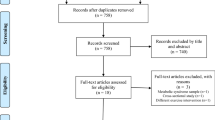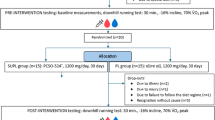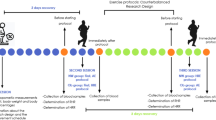Abstract
Study design:
A cross-sectional study with comparison group.
Objectives:
To evaluate the effects of long-term wheelchair rugby (WR) training on lipid profile, blood antioxidant status and the brain-derived neurotrophic factor (BDNF) level.
Setting:
Academy of Physical Education, Katowice, Poland.
Methods:
Thirty-two males with chronic cervical spinal cord injury (SCI) assigned into the physically active ‘low-point’ (LP, n=15) or ‘high-point’ (HP, n=8) WR players groups and the sedentary manual wheelchair users (SED, n=9) participated in this study. Fasting blood samples were collected at rest for assessment of activities of antioxidant enzymes, concentrations of reduced glutathione, uric acid, malondialdehyde (MDA), lipid profile measures and BDNF.
Results:
No significant differences were found in anthropometric measures and serum lipid profile indices, although a slight tendency toward higher high-density lipoprotein cholesterol level was evidenced in WR players. Significantly lower serum malondialdehyde (MDA) and significantly higher levels of the overall enzymatic antioxidant potential index (EAP) in WR players, compared with SED, may reflect some WR training-induced increase in the blood’s antioxidant capacity. There was also a slight tendency toward higher serum BDNF level in WR players compared with the SED group and a significant positive association between years of WR training and the BDNF level.
Conclusion:
A voluntary participation in a long-term WR training program has several health promoting outcomes for individuals with chronic SCI. Among the most important are enhancement of the blood antioxidant defense capacity evidenced by lower MDA and higher EAP levels, as well as WR training-induced activation of BDNF signaling.
Similar content being viewed by others
Log in or create a free account to read this content
Gain free access to this article, as well as selected content from this journal and more on nature.com
or
References
Oyinbo CA . Secondary injury mechanisms in traumatic spinal cord injury: a nugget of this multiply cascade. Acta Neurobiol Exp 2011; 71: 281–299.
Bedreag OH, Rogobete AF, Sărăndan M, Cradigati A, Păpurică M, Roşu OM et al. Oxidative stress and antioxidant therapy in traumatic spinal cord injuries. RJAIC 2014; 21: 123–129.
Gater DR Jr . Obesity after spinal cord injury. Phys Med Rehabil Clin N Am 2007; 18: 333–351.
van Duijnhoven N, Hesse E, Janssen T, Wodzig W, Scheffer P, Hopman M . Impact of exercise training on oxidative stress in individuals with spinal cord injury. Eur J Appl Physiol 2010; 109: 1059–1066.
Cragg JJ, Ravensbergen HJC, Borisoff JF, Claydon VE . Optimal scaling of weight and waist circumference to height for adiposity and cardiovascular disease risk in individuals with spinal cord injury. Spinal Cord 2015; 53: 64–68.
Bauman WA, Spungen AM . Coronary heart disease in individuals with spinal cord injury: assessment of risk factors. Spinal Cord 2008; 46: 466–476.
Archer T, Josefsson T, Lindwall M . Effects of physical exercise on depressive symptoms and biomarkers in depression. CNS Neurol Disord Drug Targets 2014; 13: 1640–1653.
Rojas Vega S, Abel T, Lindschulten R, Hollmann W, Bloch W, Strüder HK . Impact of exercise on neuroplasticity-related proteins in spinal cord injured humans. Neurosciences 2008; 153: 1064–1070.
Yu H, Chen Z . The role of BDNF in depression on the basis of its location in the neural circuitry. Acta Pharmacol Sin 2011; 32: 3–11.
Michalczyk M, Kłapcińska B, Sadowska-Krępa E, Jagsz S, Pilis W, Szołtysek-Bołdys I et al. Evaluation of the blood antioxidant capacity in two selected phases of the training cycle in professional soccer players. J Hum Kinet 2008; 19: 93–108.
Dobiášová M, Frohlich J . The plasma parameter log(TG/HDL-C) as an atherogenic index: correlation with lipoprotein particle size and esterification rate in apoB-lipoprotein-depleted plasma (FERHDL . Clin Biochem 2001; 34: 583–588.
de Groot PCE, Hjeltnes N, Heijboer AC, Stal W, Birkeland K . Effects of training intensity on physical capacity, lipid profile and insulin sensitivity in early rehabilitation of spinal cord injured individuals. Spinal Cord 2003; 41: 673–679.
van Koppenhagen CF, de Groot S, Post MWM, van Asbeck FWA, Spijkerman D, Faber WXM et al. Wheelchair exercise capacity in spinal cord injury up to five years after discharge from inpatient rehabilitation. J Rehabil Med 2013; 45: 646–652.
Ravensbergen HR, Lear SA, Claydon VE . Waist circumference is the best index for obesity-related cardiovascular disease risk in individuals with spinal cord injury. J Neutrotrauma 2014; 31: 292–300.
Hübner-Woźniak E, Morgulec-Adamiec N, Malara M, Okęcka-Szymańska J . Effect of training on the serum lipid profile in able-bodied and spinal cord injured rugby players. Biol Sport 2010; 27: 269–272.
Hübner-Woźniak E, Morgulec-Adamowicz N, Malara M, Lewandowski P, Okęcka-Szymańska J . Effect of rugby training on blood antioxidant defenses in able-bodied and spinal cord injured players. Spinal Cord 2012; 50: 253–256.
Hall ED . Antioxidant therapies for acute spinal cord injury. Neurotherapeutics 2011; 8: 152–167.
Bastani NE, Kostovski E, Sakhi AK, Karlsen A, Carlsen MH, Hjeltnes N et al. Reduced antioxidant defense and increased oxidative stress in spinal cord injured patients. Arch Phys Med Rehabil 2012; 93: 2223–2228.
Fatima G, Sharma VP, Das SK, Mahdi AA . Oxidative stress and antioxidative parameters in patients with spinal cord injury: implications in the pathogenesis of disease. Spinal Cord 2015; 53: 3–5.
Gomez-Cabrera MC, Domenech E, Viňa J . Moderate exercise is an antioxidant: Upregulation of antioxidant genes by training. Free Rad Biol Med 2008; 44: 126–131.
Bloomer RJ, Goldfarb AH . Anaerobic exercise and oxidative stress: a review. Can J Appl Physiol 2004; 29: 245–263.
Furmaniak L, Cywińska-Wasilewska G, Kaczmarek D . Influence of long-term wheelchair rugby training on the functional abilities of persons with tetraplegia over a two-year period post-spinal cord injury. J Rehabil Med 2010; 42: 688–690.
Arango-Lasprilla JC, Ketchum JM, Starkweather A, Nicholls E, Wilk AR . Factors predicting depression among persons with spinal cord injury 1 to 5 years post injury. NeuroRehabilitation 2011; 29: 9–21.
Gioia MC, Cerasa A, Di Lucente L, Brunelli S, Castellano Y, Traballesi M . Psychological impact of sports activity in spinal cord injury patients. Scand J Med Sci Sports 2006; 16: 412–416.
Acknowledgements
We are grateful to the participants for their time and effort. The study was supported by the statutory funding from the Academy of Physical Education.
Author information
Authors and Affiliations
Corresponding author
Ethics declarations
Competing interests
The authors declare no conflict of interest.
Rights and permissions
About this article
Cite this article
Sadowska-Krępa, E., Zwierzchowska, A., Głowacz, M. et al. Blood metabolic response to a long-term wheelchair rugby training. Spinal Cord 54, 371–375 (2016). https://doi.org/10.1038/sc.2015.178
Received:
Revised:
Accepted:
Published:
Issue date:
DOI: https://doi.org/10.1038/sc.2015.178
This article is cited by
-
Musculoskeletal pain as the effect of internal compensatory mechanisms on structural and functional changes in body build and posture in elite Polish sitting volleyball players
BMC Sports Science, Medicine and Rehabilitation (2022)
-
Physical activity and cardiometabolic risk factors in individuals with spinal cord injury: a systematic review and meta-analysis
European Journal of Epidemiology (2022)



